I took these pictures of The Art of Video Games Exhibit at the Smithsonian American Art Museum when I went up to Washington DC to check out a multi-day car auction to try to find an RX-8 for the EV Conversion Project. I had to stay an extra day between being able to see the cars and bidding on them, so I made a trip out of it by seeing the museums. I was by myself, so I got to see all the cool stuff outside of the usual tourism sites that you have to go to when you’re with somebody who’s never been to DC before. The Art of Video Games Exhibit explores the 40 year history of the use of gaming as a medium for artistic expression. Along with concept sketches, the actual game machines were split up into eras and their technological advances discussed in terms of how they were able to make games more beautiful and complex. The 80 games featured in the exhibit were voted in by 119,000 from 175 countries from February to April 2011 when the museum asked for the public’s opinion. This is the official introduction to the exhibit from it’s curator, Chris Melissinos:
When you first walk into the exhibit, there are a couple of mural pieces composed on large grids of TV screens and an intro video projected on a wall. My point and shoot camera wasn’t able to capture these in decent resolution, but I took pictures of all of the still art. The entire exhibit is very dimly lit almost like a movie theater or a laser tag arena (some of my pictures didn’t turn out because of this, sorry). After the videos at the entrance, there is a hallway featuring concept sketches from the development of some popular games. The first big room has 5 playable game demos. The video is projected onto a large semi-circular wall with the controls on a podium in the middle. The last room is where all the machines are on display with informational videos about the breakthroughs in gaming each machine was responsible for.
- Sony Playstation 3 Significant Games
- Sony Playstation 3 from 2006
- Nintendo Wii Significant Games
- Nintendo Wii from 2006
- Microsoft Xbox 360 Significant Games
- Microsoft Xbox 360 from 2005
- Microsoft Windows PC Significant Games
- Microsoft Windows XP from 2001 and Windows 7 from 2009
- Nintendo GameCube Significant Games
- Nintendo GameCube from 2001
- Microsoft Xbox Significant Games
- Microsoft Xbox from 2001
- Sony Playstation 2 from 2000
- The fifth and final era is “Next Generation”
- SEGA Dreamcast from 1999
- Nintendo 64 Significant Games
- Nintendo 64 from 1996
- Sony Playstation Significant Games
- Sony Playstation from 1995
- Windows 95 Significant Games
- Microsoft Windows 95 from 1995
- SEGA Saturn Significant Games
- SEGA Saturn from 1995
- The fourth console era is “Transition”
- Super Nintendo Entertainment System Significant Games
- Super Nintendo Entertainment System from 1991
- SEGA Genesis Significant Games
- SEGA Genesis from 1989
- The third console era is called “Bitwars”
- SEGA Master System Significant Games
- SEGA Master System from 1982
- Nintendo Entertainment System Significant Games
- Nintendo Entertainment System from 1985
- Commodore 64 Significant Games
- Commodore 64 from 1982
- The second era is 8-bit
- ColecoVision Significant Games
- ColecoVision from 1982
- Intellivision Significant Games
- Matel Intellivision 1979
- Atari VCS Significant Games
- Atari VCS from 1977
- The consoles are divided up into 5 eras. The first is “Start” from the 70’s to early 80’s.
- Next up is the console archive. Each machine had a screen like this where you could put on some headphones and watch videos about 4 games that were significant for that console. They were split up into Action, Target, Adventure and Tactics games.
- This is on the wall at the end of the playable demo section of the exhibit.
- The most modern of the playable demos is Flower for the PS3. It looks simple since you play as the wind that blows around flower seeds, but it’s supposed to be pretty revolutionary in terms of flight and aerodynamic simulation.
- Myst is one of the first PC CD-Rom games. It’s an adventure puzzle game.
- This is a pirate adventure game called The Secret of Monkey Island. I think it was for PC.
- Next up is Super Mario Brothers from the Nintendo Entertainment System
- The first of the playable game demos is Pac-Man
- This is on the wall at the end of the concept art section of the exhibit
- Concept art for the Dwarf capital city, Ironforge, from World of Warcraft.
- Northshire Abbey from World of Warcraft. This is one of the first inns you visit if you start the game as a Human.
- Designer Ed Fries made an 8-bit version of Halo because he was inspired by the creativity it took to work around the limitations of old consoles. This game is playable online at: http://members.shaw.ca/jeffv/halo2600.html
- Early Kerrigan Concept and Zergling drawing for the Starcraft instruction manual
- Warcraft Troll concept by Blizzard Entertainment
- These sketches were in display cases below the color art on the wall. I didn’t take a picture of the info tag for this one, but I think it was from one of the Bioshock games.
- Mickey and Oswald and Concept Art from Epic Mickey, 2008 Donny Hamilton and 2009 Rolf Mohr of Disney
- Sonic and Knuckles, 1993 Sonic Team of SEGA
- Concept Art from Metal Gear Solid 4: Guns of the Patriots, 2008 Yoji Shinkawa of Konami Digital Entertainment
- Concept Art of Mushroom Hill from Sonic and Knuckles, 1994 Sonic Team of SEGA
- Barad-Dur Tower from Lord of the Rings: Battle for Middle Eart II, 2005 Michael Zimmerman of Electronic Arts Inc.
- Worms Armageddon Concept, 1998 Danny Cartwright of Team 17
- Dragon from Lord of the Rings: Battle for Middle Earth II, 2005 Michael Zimmerman of Electronic Arts Inc.
- Second cluster of concept art.
- Dwarven Army from Lord of the Rings: Battle for Middle Earth II, 2005 Michael Zimmerman of Electronic Arts Inc.
- Concept Art from Epic Mickey, 2009 Sam Yates of Disney
- Concept Art from Metal Gear Solid 4: Guns of the Patriots, 2008 Yoji Shinkawa of Konami Digital Entertainment
- Sketch of Sonic shortly after changing Classic Sonic to Modern Sonic, 1998 Sonic Team of SEGA
- Worms Armageddon Concept, 1998 Danny Cartwright of Team 17
- Concept Sketch of Emerald Coast from Sonic Adventure, 1998 Sonic Team of SEGA
- Worms Armageddon Concept, 1998 Danny Cartwright of Team 17
- Ring Wraith from Lord of the Rings: Battle for Middle Earth II, 2005 Michael Zimmerman of Electronic Arts Inc.
- Concept Art from Metal Gear Solid 4: Guns of the Patriots, 2008 Yoji Shinkawa of Konami Digital Entertainment
- Labels for the different pictures and their sources.
- First cluster of concept art.
- The three portraits are televisions that showed footage of people as they played video games.
- Message from the curator who also advised the museum when they were setting up the exhibit.
- This is the official logo for the exhibit. They used font similar to old computer displays and distorted it like a classic tube television.

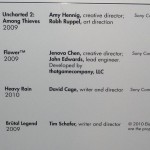

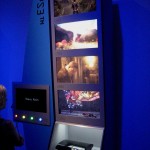
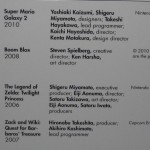
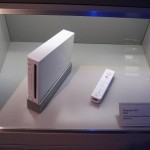

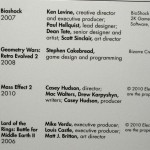

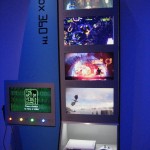
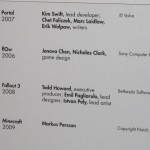
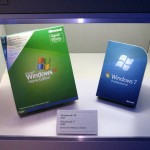
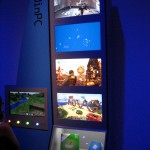
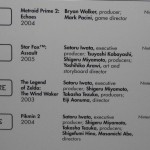
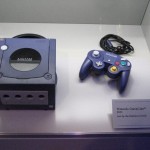
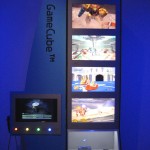
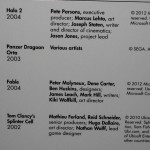
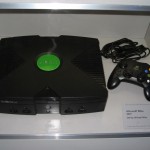
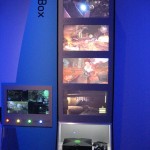


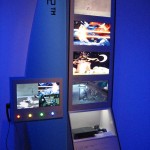
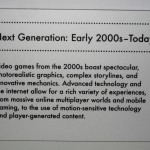
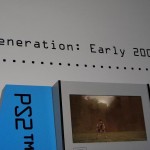

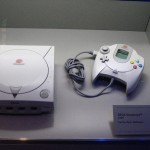

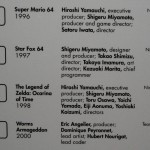
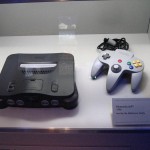
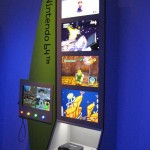

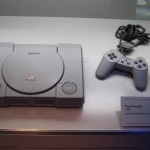
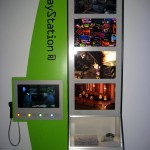

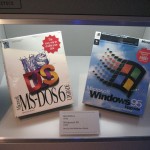
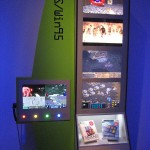
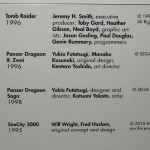

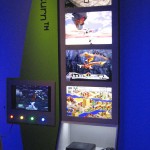
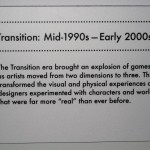


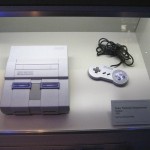
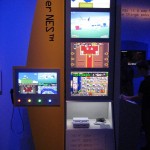
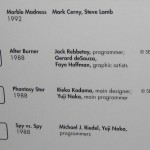
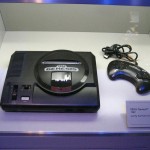
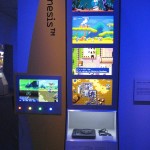
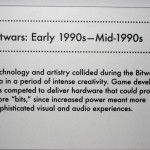

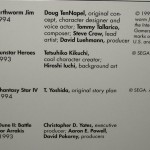
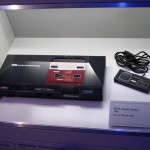
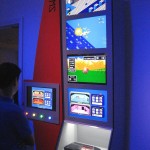
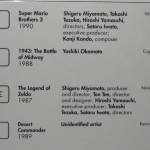
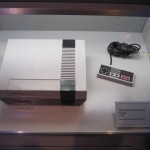
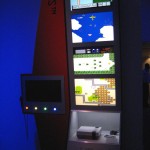
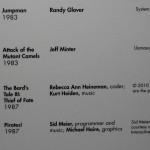
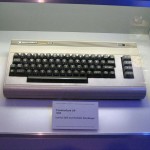
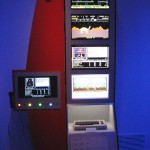

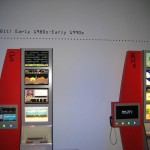
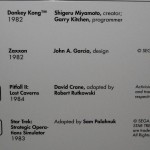
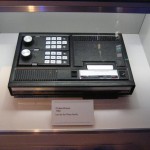
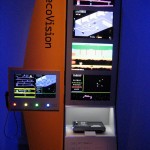

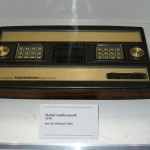


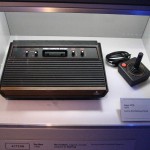
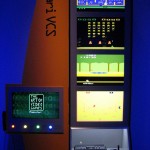
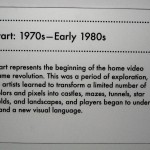
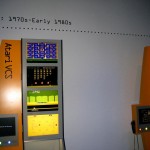


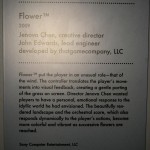
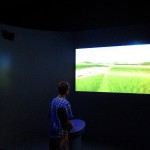

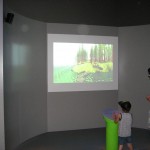
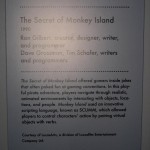
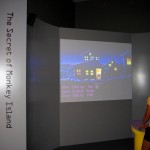
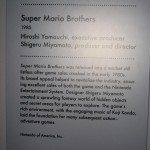
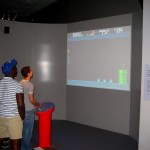

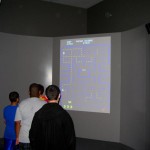

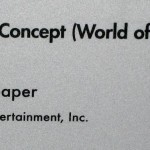
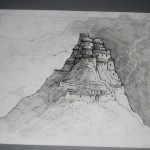

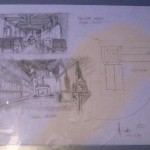

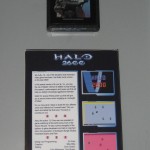


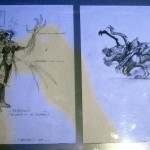
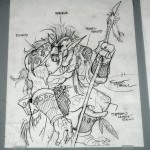
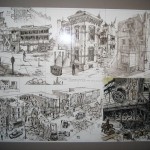
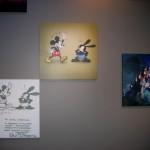
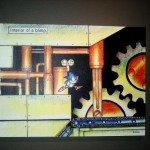
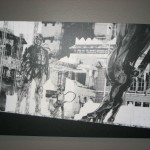
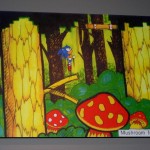
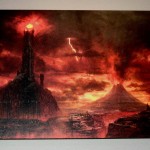

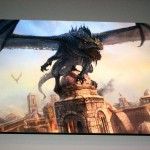
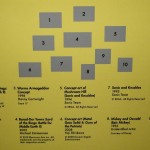
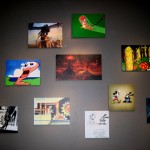

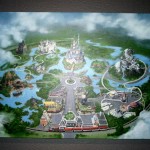
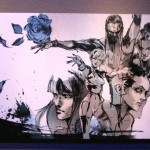
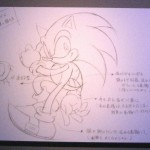
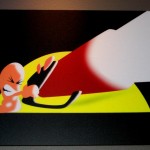


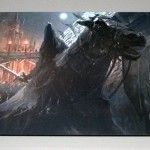

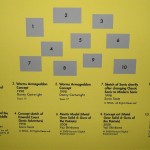




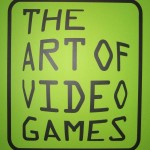
Pingback: Smithsonian National Air and Space Museum Steven F. Udvar-Hazy Center Part 1 **Stickied** | FluxAuto